Did you know that Marantz has been shaping the audio industry for over 70 years? Since its founding in 1953 by Saul Marantz in New York, the brand has been synonymous with innovation and excellence. Its first product, the Audio Consolette, was crafted on a kitchen table, yet it set the foundation for a legacy of unparalleled sound quality.
From the beginning, Marantz has been driven by a mission to deliver “The Most Musical Sound.” This commitment has led to groundbreaking designs and technologies that have redefined home audio. Whether you’re a collector, audiophile, or home theater enthusiast, understanding the evolution of this iconic brand offers valuable insights into the world of high-fidelity sound.
This article provides a detailed year-by-year overview of Marantz’s journey, showcasing how its receiver models have evolved to meet the demands of modern audio enthusiasts. Dive in to explore the brand’s rich history and discover why it remains a leader in the industry.
Key Takeaways
- Marantz was founded in 1953 in New York, starting with the Audio Consolette.
- The brand is dedicated to delivering high-quality, musical sound.
- Its innovative designs have set industry standards for decades.
- This article appeals to collectors, audiophiles, and home theater enthusiasts.
- Explore the evolution of Marantz’s receiver models over the years.
Introduction to Marantz’s Sonic Heritage
The roots of Marantz’s sonic heritage trace back to a kitchen table in New York. Saul Marantz’s revolutionary pre-amplifier set the stage for a brand that would redefine audio excellence. From the very beginning, the company was driven by a philosophy of delivering “The Most Musical Sound.”
Early designs focused on precision and clarity, laying the groundwork for modern audio equipment. These innovations weren’t just about power or features; they were about creating an emotional connection to music. This dedication to quality has influenced every model produced since.
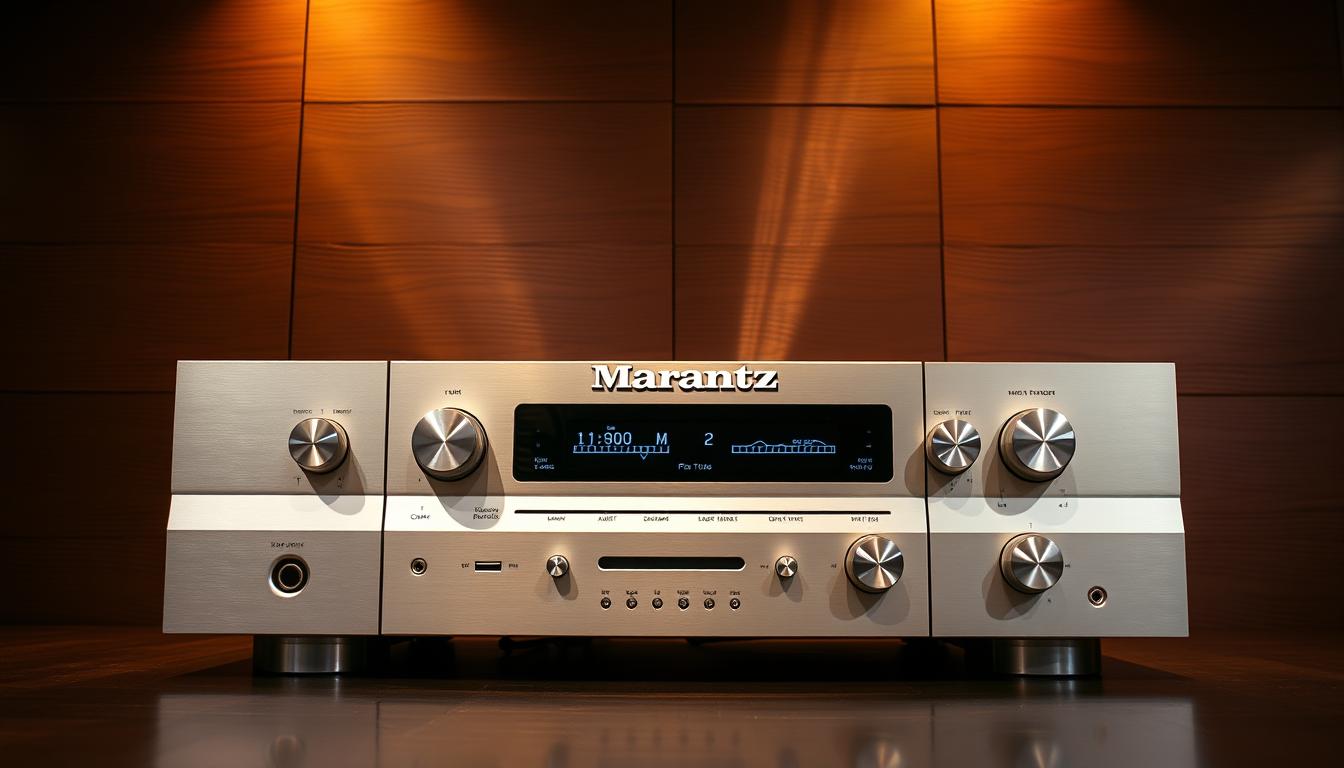
Over time, Marantz evolved from analog components to digitally integrated systems. This transition reflects the brand’s ability to adapt while staying true to its core values. The expansion into Marantz Japan further cemented its global reputation for excellence.
Today, Marantz is synonymous with musical perfection. Whether it’s a receiver, tuner, or player, each product embodies the brand’s rich heritage. This legacy continues to inspire audiophiles and home theater enthusiasts worldwide.
1950s: The Birth of a Revolution in Audio
Saul Marantz’s kitchen table became the birthplace of a sonic revolution. In 1953, he crafted the Audio Consolette, a preamplifier that redefined audio quality. This groundbreaking device featured an innovative equalizer design, setting a new standard for sound reproduction.
Marantz’s vision was clear: to deliver “The Most Musical Sound.” His use of vacuum tube technology ensured rich, warm tones that captivated listeners. This approach wasn’t just about power; it was about creating an emotional connection to music.

New York’s vibrant culture played a significant role in shaping early product development. The city’s energy and creativity fueled Marantz’s innovative spirit. From his humble beginnings, he laid the foundation for a brand that would become synonymous with excellence.
Saul Marantz and the Audio Consolette Breakthrough
The Audio Consolette wasn’t just a product; it was a statement. Its equalizer design allowed users to fine-tune their listening experience, a feature unheard of at the time. This revolutionary approach set the stage for future models.
Saul Marantz’s dedication to quality was evident in every detail. He didn’t just build a unit; he crafted an experience. This commitment to excellence quickly gained recognition, establishing the Marantz brand as a leader in the audio industry.
Early Preamplifier Innovations and Company Formation
The 1950s were a time of rapid technological advancement. Marantz’s early preamplifiers utilized vacuum tube technology, which defined the era’s audio quality. These innovations weren’t just about improving sound; they were about redefining it.
From his kitchen table, Saul Marantz launched a company that would shape the future of audio. His visionary approach set the stage for decades of innovation. The Audio Consolette was just the beginning of a legacy that continues to inspire audiophiles worldwide.
| Innovation | Impact |
|---|---|
| Audio Consolette | Revolutionized equalizer design |
| Vacuum Tube Technology | Delivered warm, rich tones |
| New York Influence | Fueled creativity and innovation |
From Mono to Stereo: Marantz’s Formative Years
The 1950s marked a turning point in audio technology with the shift from mono to stereo sound. This transition wasn’t just a technical upgrade; it redefined how people experienced music. The brand played a pivotal role in this evolution, introducing innovations that set new standards for sound quality.
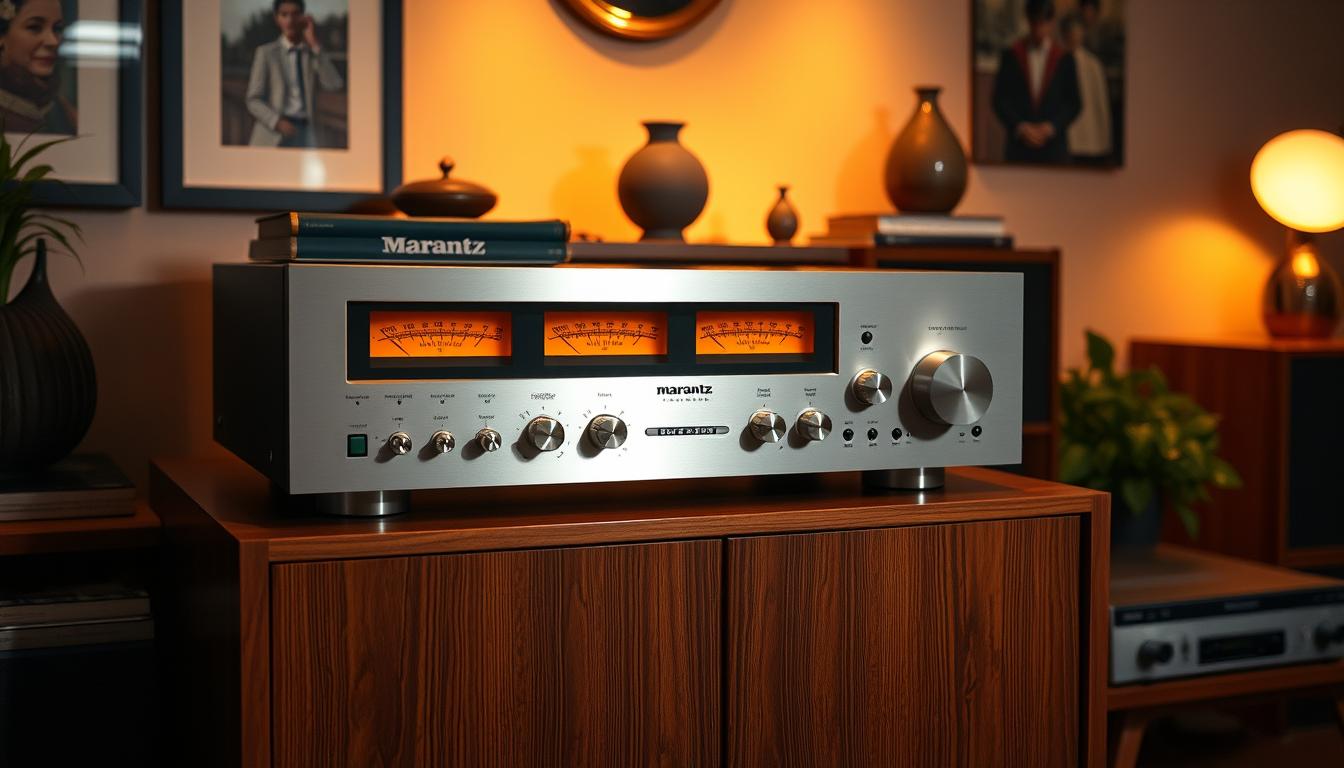
Transitioning from Mono to Stereo Sound
Stereo sound offered a more immersive listening experience by separating audio channels. This breakthrough allowed listeners to hear music in a way that felt more natural and dynamic. Early models, like the Model 1 Mono Preamplifier, were adapted to embrace stereo capabilities, showcasing the brand’s commitment to innovation.
Design changes were crucial during this period. Improved circuit layouts and better equipment engineering enhanced sound quality. These advancements weren’t just about power; they focused on delivering a richer, more detailed audio experience.
“Stereo sound wasn’t just a technical achievement; it was an emotional one. It brought music to life in a way mono never could.”
New York’s vibrant culture and early market influence played a significant role in shaping these innovations. The city’s energy fueled creativity, helping the brand overcome engineering challenges and push the boundaries of what was possible.
The impact of this transition was profound. Future receiver and amplifier models benefited from these advancements, setting the stage for decades of audio excellence. The shift from mono to stereo wasn’t just a milestone; it was a foundation for the future of high-fidelity sound.
| Innovation | Impact |
|---|---|
| Stereo Sound | Created immersive listening experiences |
| Improved Circuit Design | Enhanced sound quality and clarity |
| New York Influence | Fueled creativity and technological breakthroughs |
Marantz AV Receiver Models By Year
Over the decades, Marantz has introduced a range of iconic receiver models that have shaped the audio industry. Each model reflects the brand’s dedication to innovation, quality, and musical excellence. Let’s explore the evolution of these units and their impact on home audio.
In the 1950s, the Model 1 Mono Preamplifier set the standard for high-fidelity sound. Its vacuum tube technology delivered warm, rich tones that captivated listeners. This product laid the foundation for future designs, emphasizing precision and clarity.
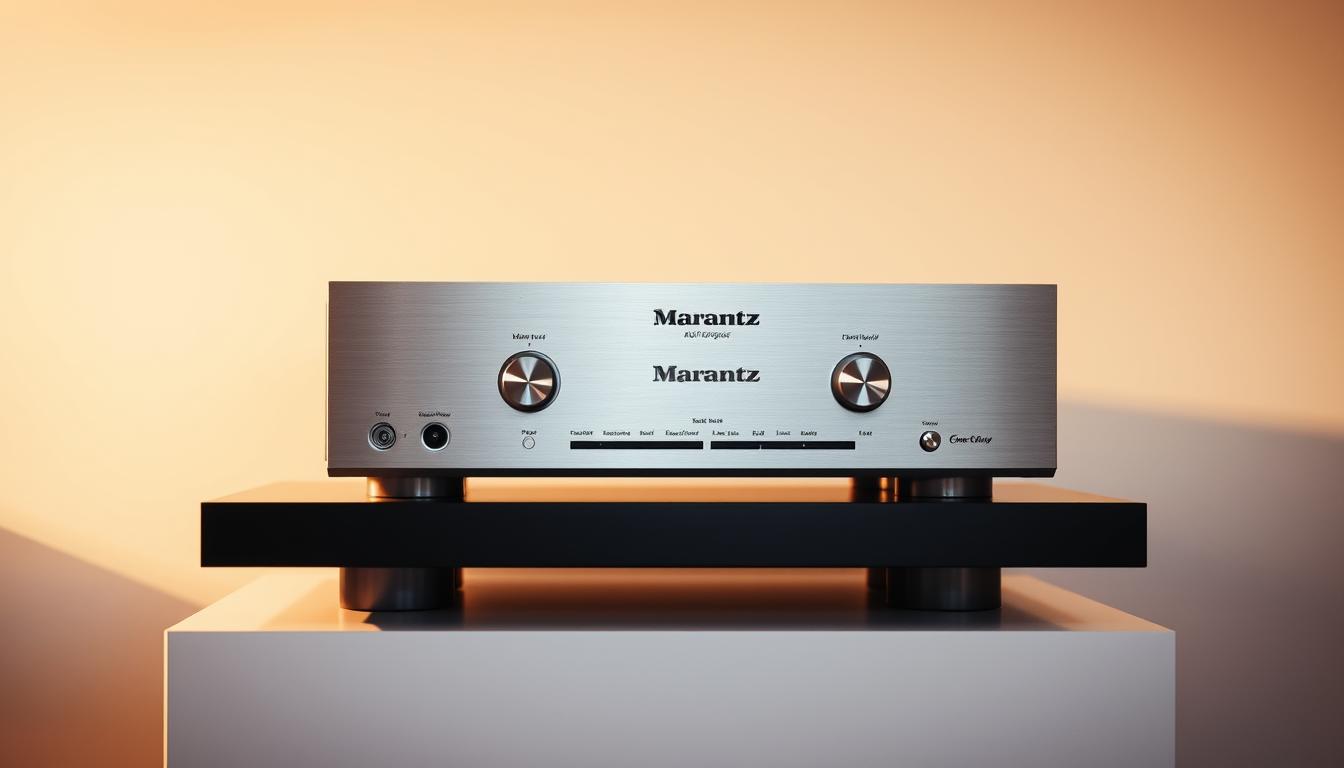
The 1960s saw the introduction of the Model 18, the first to combine a pre-amp, power amp, and tuner into a single chassis. This unit revolutionized home audio by offering a more integrated and user-friendly experience. Its design showcased Marantz’s ability to blend functionality with elegance.
By the 1970s, the Model 2270 became a standout, known for its reliability and performance. Even after surviving a fire, it continued to meet factory specifications, proving the durability of Marantz’s engineering. This model solidified the brand’s reputation for building robust and high-performing receivers.
The 1980s marked a shift to digital technology with the release of the CD-63, one of the earliest mass-adopted CD players. This player introduced listeners to the clarity and convenience of digital audio, further expanding Marantz’s influence in the industry.
In the 2000s, the SC-7S1 pre-amp and MA-9S1 power amp marked a return to high-grade separate amplifiers. These components highlighted the brand’s commitment to delivering uncompromising sound quality. Each model built on the legacy of its predecessors, pushing the boundaries of audio performance.
Today, Marantz continues to innovate with models like the MODEL 40n, which integrates network streaming technology and HDMI ARC connectivity. These advancements ensure that the brand remains at the forefront of modern audio solutions.
From its early days to the present, Marantz’s receiver models have consistently set benchmarks in the industry. Each product reflects the brand’s heritage of excellence and its ongoing commitment to delivering “The Most Musical Sound.”
1960s: Shaping the Golden Era of Audio
The 1960s marked a transformative era in audio innovation, setting new benchmarks for sound quality. This decade saw the introduction of integrated tuners and advanced design elements that redefined how music was experienced. From consumer systems to professional applications, these advancements left a lasting impact.
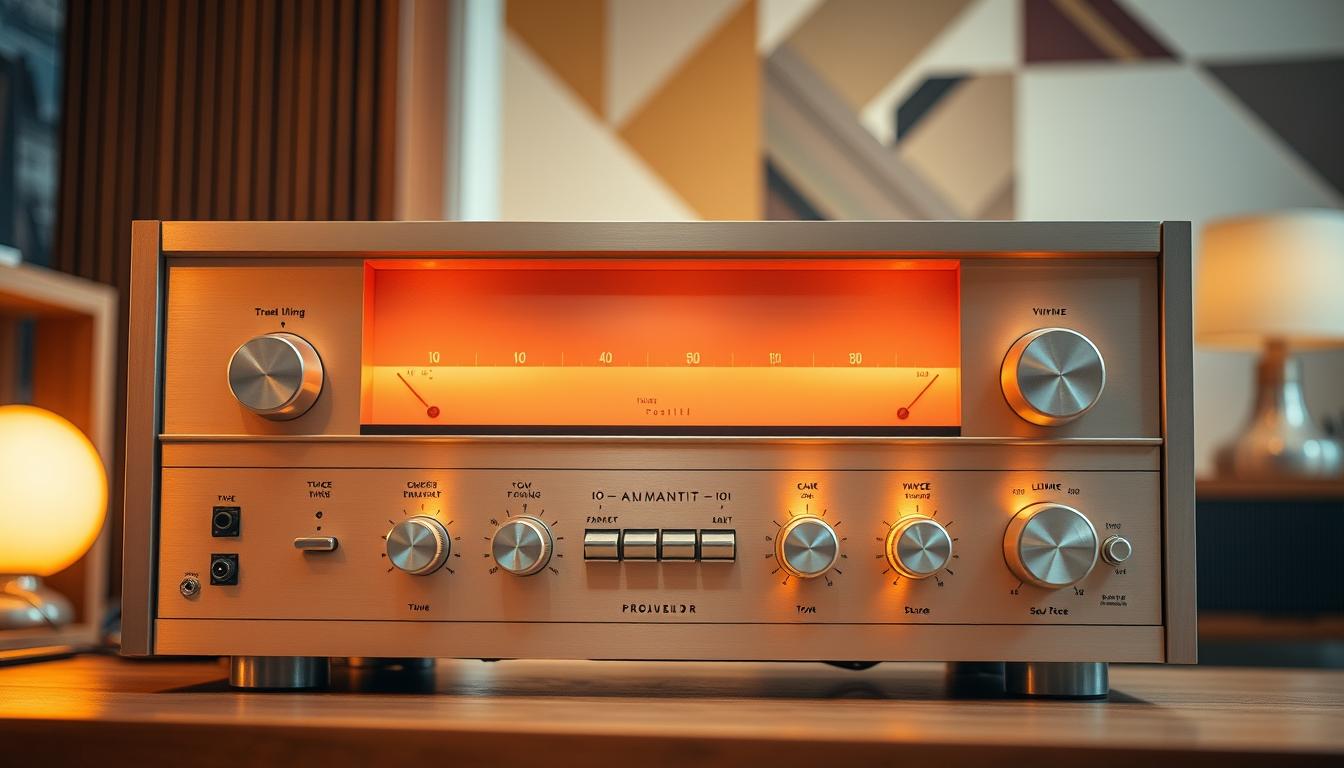
Breakthrough Models and Integrated Tuners
One of the standout innovations of the 1960s was the integration of tuners into a single chassis. This eliminated the need for separate components, making audio systems more compact and user-friendly. The Model 9, for instance, became a hallmark of this era. Its exceptional performance even led to its adaptation for NASA missions, showcasing its cutting-edge design.
Collaborative efforts between engineers from New York and Marantz Japan played a crucial role in these advancements. Their combined expertise resulted in models that delivered unparalleled sound quality and reliability. These innovations not only impressed audiophiles but also set new standards for the industry.
Design Innovations and the Gyro-Touch Tuning
The 1960s also introduced design elements that enhanced both functionality and aesthetics. One such innovation was the gyro-touch tuning mechanism. This feature allowed users to fine-tune their listening experience with precision, making it a favorite among enthusiasts.
These design breakthroughs influenced future power and audio products, shaping the evolution of home systems. The decade’s focus on combining performance with elegance ensured that these models remained iconic for years to come.
| Innovation | Impact |
|---|---|
| Integrated Tuners | Simplified audio systems for consumers |
| Gyro-Touch Tuning | Enhanced precision in sound adjustment |
| Model 9 | Set performance benchmarks, adapted for NASA |
1970s: Solid-State Excellence and Iconic Receivers
The 1970s brought a wave of innovation that reshaped the audio landscape. Solid-state technology replaced vacuum tubes, offering greater reliability and efficiency. This shift marked a new era for receivers, with models like the “Baby Marantz” leading the charge.
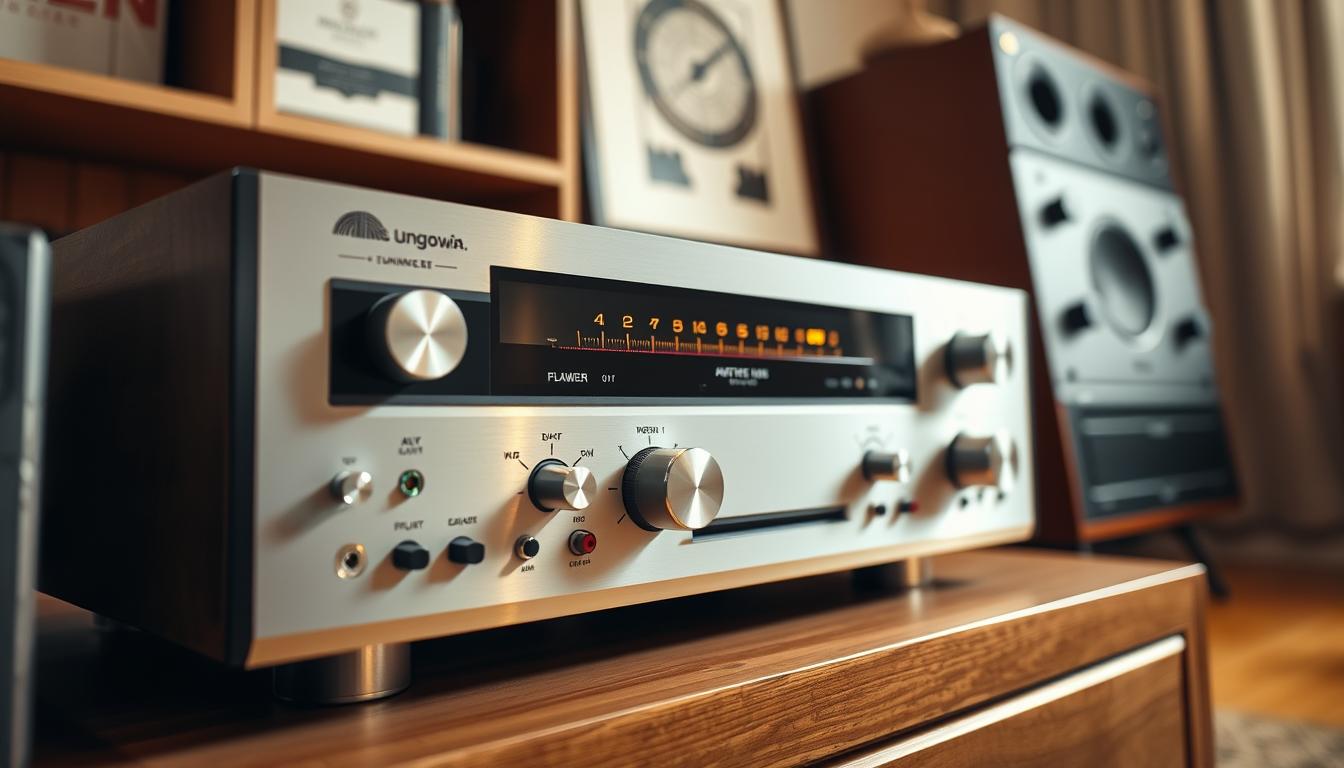
Iconic “Baby Marantz” and Power Amplifier Models
The Marantz 2270 became a standout during this decade. With 70 watts per channel, it delivered exceptional power and clarity. Its robust design and reliability made it a favorite among audiophiles.
Another notable model was the Marantz 1060. While slightly less powerful, it retained the warm, analog sound that defined the brand. These units showcased the brand’s commitment to quality and innovation.
“The 1970s were a golden age for audio, and Marantz was at the forefront of this revolution.”
Influence on Home Theater and Stereo Systems
These receivers played a pivotal role in shaping modern home theater and stereo systems. Their advanced circuitry and design improvements set new standards for sound quality and user experience.
Collaboration with Marantz Japan further refined these models, ensuring they met the highest standards. The integration of solid-state technology allowed for more compact and efficient units, making them accessible to a wider audience.
Today, Marantz receivers from the 1970s are celebrated for their sound quality and design, making them highly sought after by collectors and audiophiles. Each model, such as the Marantz 2010 and 2270, features unique specifications and aesthetics that contribute to their popularity in the vintage audio market.
1980s: Transitioning to the Digital Age
The 1980s marked a pivotal shift in audio technology, as digital innovation began to dominate the industry. This era saw the rise of compact discs (CDs), which offered unparalleled clarity and convenience. The brand embraced this change, introducing groundbreaking models that set new standards for sound quality.
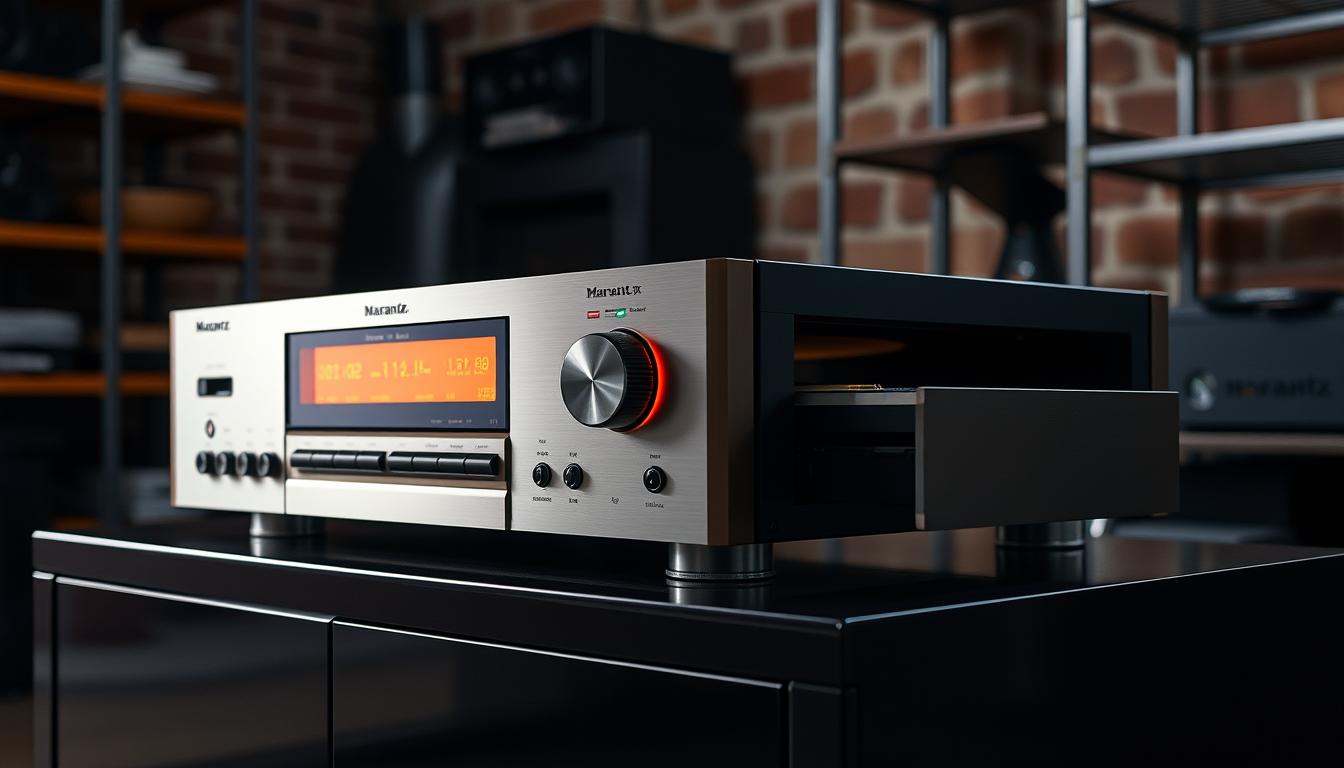
The Introduction of CD Players and Recorder Technology
In 1982, the first marantz CD player, the Model CD-63, made its debut. This player was a game-changer, offering users a digital listening experience that was crisp and distortion-free. Its advanced technology ensured superior audio performance, making it a favorite among audiophiles.
Digital recording also took center stage during this time. Innovations in CD-recorder technology allowed users to create their own high-quality recordings. This shift from analog to digital techniques not only improved sound fidelity but also expanded the possibilities for audio enthusiasts.
Improvements in power management and electronic integration were key to this transformation. Digital components required more efficient power systems, and the brand rose to the challenge. These advancements ensured that their models remained at the forefront of the industry.
“The 1980s were a turning point for audio, as digital technology redefined what was possible.”
Collaboration with Marantz Japan played a crucial role in overcoming technical challenges. Their expertise in digital engineering helped the brand deliver models that were both innovative and reliable. This partnership ensured that the transition to digital was seamless and impactful.
Today, the legacy of the 1980s lives on in modern audio equipment. The first marantz digital foray paved the way for future innovations, solidifying the brand’s reputation for excellence. For a deeper dive into how other brands embraced digital advancements, check out this guide on Yamaha receiver models by year.
2000 – 2020: Redefining Audio Performance
The 2000s marked a new chapter in audio innovation, blending tradition with cutting-edge technology. This era saw the introduction of high-grade amplifiers and the iconic M1 design, which redefined performance standards. The integration of digital components further enhanced sound quality, setting a new benchmark for modern audio systems.
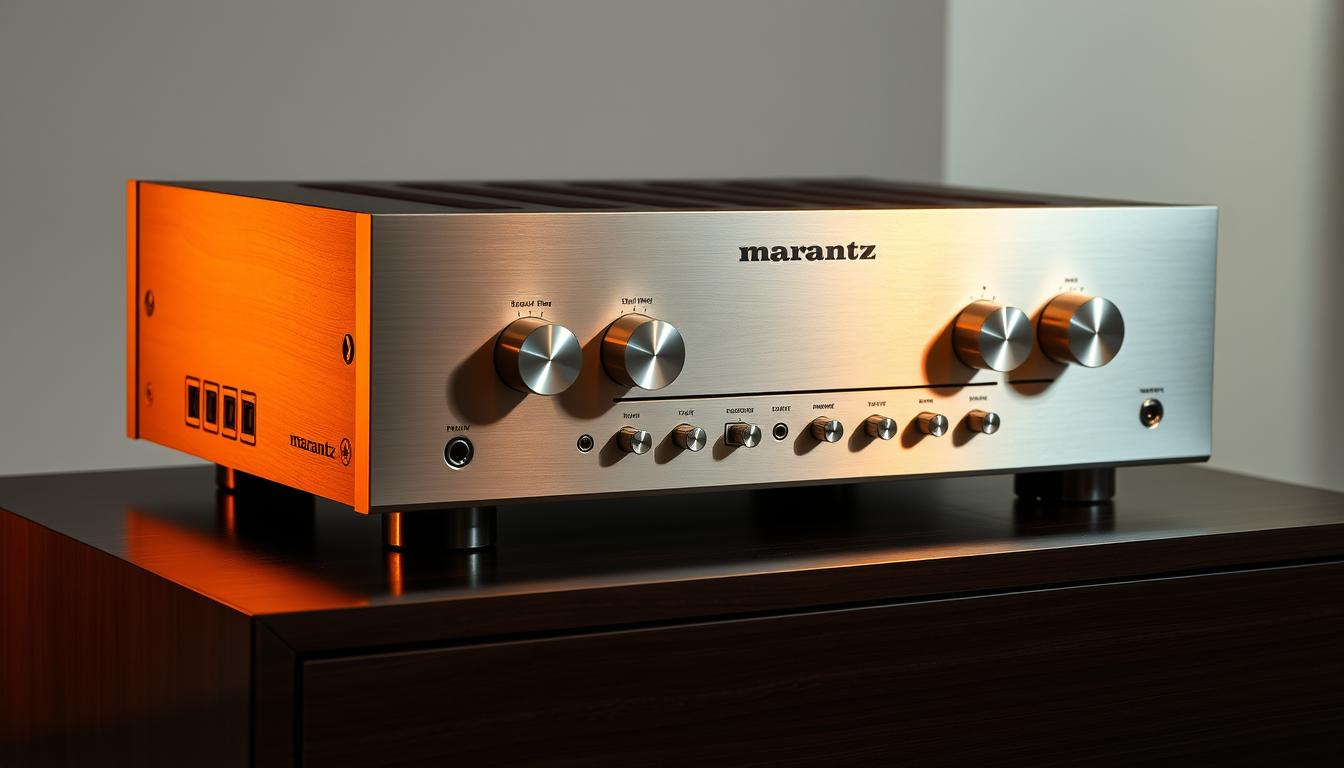
High-Grade Amplifiers and the M1 Design
In 2002, Marantz Japan introduced the SC-7S1 and MA-9S1 amplifiers, featuring the distinctive M1 design. These models combined sleek aesthetics with exceptional power, delivering unparalleled sound clarity. The M1 design emphasized durability and precision, ensuring long-term reliability.
These amplifiers were a testament to the brand’s commitment to innovation. By focusing on high-grade components, they achieved a level of performance that surpassed earlier analog units. This approach not only improved sound quality but also set new standards for the industry.
Embracing Digital Integration and Enhanced Components
The integration of digital technology was a game-changer during this period. Advanced components allowed for more efficient power management, reducing energy consumption while maintaining performance. This shift also improved the durability of audio systems, making them more reliable for everyday use.
Key models like the PM-11S3 integrated these advancements seamlessly. Their ability to handle high-resolution audio formats ensured a richer listening experience. The use of digital components also allowed for more compact designs, making them ideal for modern homes.
| Innovation | Impact |
|---|---|
| M1 Design | Enhanced durability and aesthetics |
| Digital Integration | Improved power efficiency and sound quality |
| High-Grade Components | Set new performance benchmarks |
From 2000 to 2020, the brand continued to push the boundaries of audio engineering. Each model reflected a commitment to excellence, ensuring that listeners could enjoy “The Most Musical Sound.” This legacy of innovation remains a cornerstone of the brand’s identity.
2020 and Beyond: Modern Technological Milestones
The audio landscape has evolved dramatically since 2020, with groundbreaking innovations leading the way. Recent models like the MODEL 30 and MODEL 40n showcase the brand’s commitment to blending tradition with cutting-edge technology. These products emphasize integrated network streaming, HDMI ARC connectivity, and modern industrial design, marking a clear evolution from past equipment.
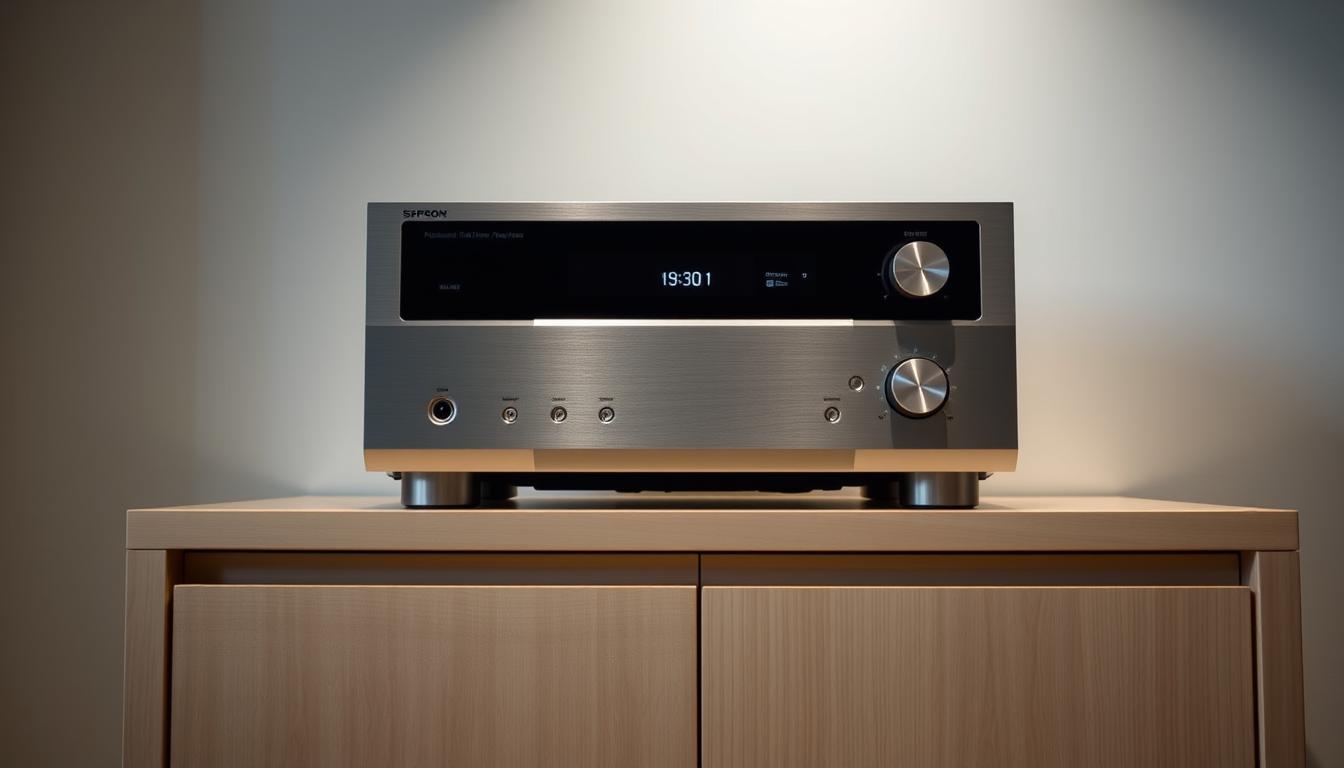
Innovative Connectivity and Streaming Features
One of the standout advancements in recent years is the integration of advanced streaming capabilities. The MODEL 40n, for instance, supports high-resolution audio formats like FLAC and DSD, ensuring a rich listening experience. Its HDMI ARC connectivity allows seamless integration with modern home theater systems, making it a versatile choice for audio enthusiasts.
Streaming isn’t just about convenience; it’s about quality. These models leverage HEOS Built-in technology, enabling multi-room audio streaming with ease. Whether you’re playing music from Spotify, TIDAL, or Amazon Music, the sound remains crisp and immersive.
Modern Design and Cutting-Edge Equipment
The design of recent models reflects a blend of elegance and functionality. The MODEL 30, with its sleek, minimalist aesthetic, is a testament to this approach. Its robust construction ensures durability, while its compact form fits seamlessly into modern living spaces.
Inside, these receivers are packed with advanced components. From efficient power management to high-grade amplifiers, every detail is engineered for performance. The result is a product that not only looks great but delivers exceptional sound quality.
| Feature | Impact |
|---|---|
| Integrated Streaming | Enables seamless multi-room audio |
| HDMI ARC Connectivity | Simplifies home theater integration |
| Modern Design | Combines aesthetics with functionality |
| High-Grade Components | Ensures superior sound quality |
As we move toward the end of traditional formats, these advancements highlight the brand’s forward-thinking approach. By embracing modern technology while staying true to its core values, the brand continues to set benchmarks in the audio industry.
A Detailed Look at Marantz’s Evolution in Receiver Technology
The journey of audio innovation has been marked by groundbreaking milestones, each shaping the future of sound. From the early days of analog to the digital age, the brand has consistently pushed the boundaries of what’s possible in audio design. Let’s explore the key engineering and technological shifts that have defined its legacy.
Engineering Milestones and Technological Shifts
One of the earliest breakthroughs was the introduction of gyro-touch tuning in the 1960s. This feature allowed users to fine-tune their listening experience with precision, setting a new standard for tuner technology. The Model 18, which incorporated this innovation, became a hallmark of the era.
In the 1970s, the shift to solid-state technology marked another significant leap. This advancement improved reliability and efficiency, paving the way for iconic models like the Marantz 2270. Its robust design and exceptional power made it a favorite among audiophiles.
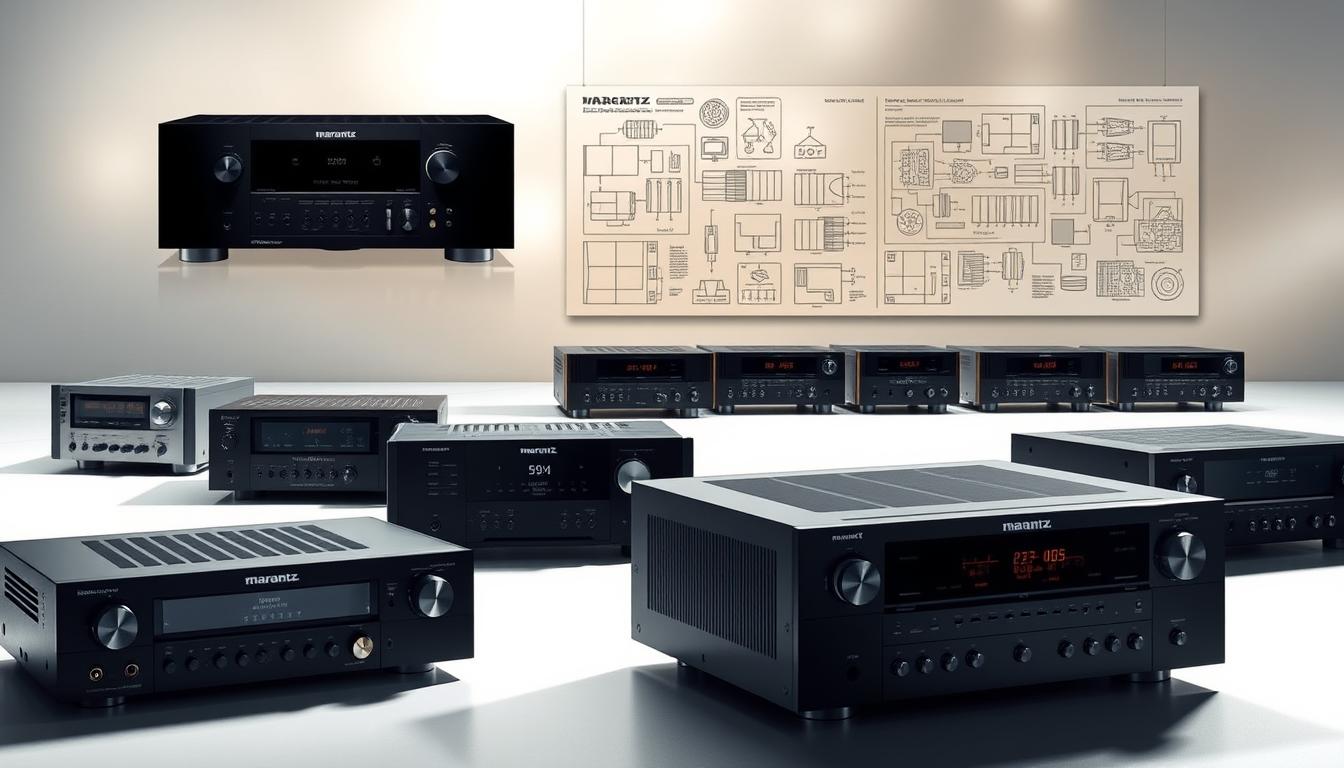
The 1980s brought the digital revolution, with the introduction of CD players like the Model CD-63. This player offered unparalleled clarity, redefining how listeners experienced music. Collaboration with Philips Electronics played a crucial role in overcoming technical challenges during this transition.
In the 2000s, the focus shifted to high-grade amplifiers and digital integration. The SC-7S1 and MA-9S1 showcased the brand’s commitment to delivering uncompromising sound quality. These units set new benchmarks for performance and durability.
Innovative Components and Their Impact
Each model introduced innovative components that revolutionized receiver performance. From vacuum tubes to solid-state circuits, these advancements ensured superior sound quality and reliability. The integration of digital components further enhanced efficiency and precision.
Today, modern products like the MODEL 40n continue this legacy. With features like network streaming and HDMI ARC connectivity, they cater to the demands of contemporary audio enthusiasts. These advancements highlight the brand’s ability to adapt while staying true to its core values.
| Milestone | Impact |
|---|---|
| Gyro-Touch Tuning | Enhanced precision in sound adjustment |
| Solid-State Technology | Improved reliability and efficiency |
| Digital Integration | Delivered superior sound clarity |
| High-Grade Amplifiers | Set new performance benchmarks |
From its early days to the present, the brand’s commitment to innovation has shaped the audio industry. Each series reflects a dedication to delivering “The Most Musical Sound,” ensuring its place as a leader in the field.
Marantz Models That Shaped Audio History
Some products transcend their time, becoming timeless symbols of innovation and craftsmanship. Over the decades, certain models have left an indelible mark on the audio industry, celebrated for their design, performance, and enduring appeal. These iconic units continue to inspire collectors and audiophiles alike, offering a glimpse into the evolution of sound technology.
Collector Favorites and Their Legacy
The Marantz 2252 is a prime example of a receiver that has stood the test of time. Known for its robust power and warm sound, it remains a favorite among enthusiasts. Similarly, the Model 1550 and 2010 are celebrated for their reliability and performance, making them highly sought-after pieces in the vintage audio market.
These models were not just about sound quality; they were about creating an emotional connection to music. Their design elements, from the iconic blue dials to the solid construction, reflect a commitment to excellence that continues to resonate with users today.
Remarkable Design and Enduring Value
The Model 2270 is another standout, known for its durability and exceptional performance. Even after surviving a fire, it continued to meet factory specifications, a testament to its robust engineering. This unit exemplifies how design and technology can combine to create a product that remains relevant decades later.
Innovations like the gyro-touch tuning in the Model 18 and the precise alignment process of the Model 10B highlight the brand’s dedication to quality. These features not only enhanced the listening experience but also set new standards for the industry.
| Model | Key Features | Legacy |
|---|---|---|
| 2252 | Robust power, warm sound | Collector favorite |
| 1550 | Reliability, performance | Highly sought-after |
| 2010 | Compact design, solid construction | Enduring appeal |
| 2270 | Durability, exceptional performance | Fire-survivor legend |
From their early prototypes to celebrated models, these units have influenced both high-end home and professional audio systems. Their legacy continues to inspire modern designs, ensuring that the marantz brand remains synonymous with innovation and excellence.
Conclusion
From humble beginnings to cutting-edge innovation, the journey of audio excellence has been marked by relentless progress. Over the decades, iconic models have redefined sound quality, blending tradition with modern technology. Each product reflects a commitment to delivering “The Most Musical Sound,” ensuring an emotional connection to music.
Key breakthroughs, from early tuner designs to advanced streaming capabilities, have shaped the audio landscape. The integration of power and precision in every receiver highlights the brand’s dedication to innovation. These milestones continue to influence modern systems, setting benchmarks for performance and reliability.
As we look to the future, the promise of even greater advancements remains. The end of one era marks the beginning of another, filled with possibilities. Explore this rich legacy and discover how it continues to inspire audio enthusiasts worldwide.
FAQ
Who founded the Marantz brand and when?
Saul Marantz founded the brand in 1953, starting with the Audio Consolette, a groundbreaking preamplifier that set the stage for future innovations.
What was the first significant product from Marantz?
The first notable product was the Audio Consolette, a high-quality preamplifier designed by Saul Marantz, which became the foundation of the company’s reputation.
How did Marantz transition from mono to stereo sound?
In the late 1950s and early 1960s, Marantz introduced stereo components, including tuners and amplifiers, revolutionizing the way listeners experienced music.
What are some iconic Marantz models from the 1970s?
The 1970s saw the release of iconic models like the “Baby Marantz” and various power amplifiers, which became staples in home audio systems.
How did Marantz adapt to the digital age in the 1980s?
Marantz embraced digital technology by introducing CD players and recorder technology, ensuring its place in the evolving audio landscape.
What modern features define Marantz products today?
Modern Marantz products feature advanced connectivity, streaming capabilities, and high-grade amplifiers, catering to contemporary audio enthusiasts.
What makes Marantz receivers stand out in the market?
Marantz receivers are known for their exceptional sound quality, innovative design, and integration of cutting-edge technology, making them a top choice for audiophiles.
Are vintage Marantz models still valuable today?
Yes, vintage models like the Marantz 10B tuner and 7T preamplifier are highly sought after by collectors for their enduring quality and historical significance.


